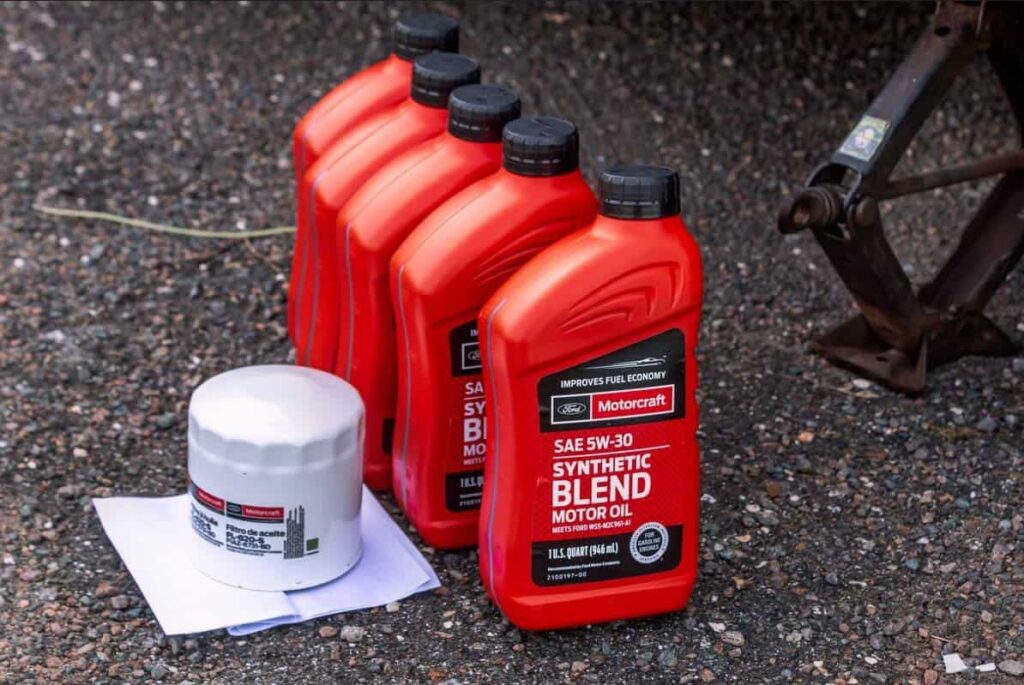An oil and filter change is essential maintenance that comes with owning a combustion-engine vehicle. The oil must be changed, but what happens if you go over the mileage indicator and how many miles can you go over an oil change before you start to cause problems are valid questions.
Now, if you ask a dealership this question, they will tell you don’t go over it; the car will fail immediately, basically all bad news. When realistically, that is not entirely true, at least not by going a few miles over.
How Many Miles Can You an Over an Oil Change?
So, the main dealerships will tell you the oil needs replacing every 7,500 miles in most cars, but realistically you aren’t replacing the oil because its going to be low; you are replacing it because the properties of the oil are degrading.
It is possible, in theory, to go 15 – 20,000 miles without replacing the oil if the oil level is correct, although nobody would recommend this. Because the oil absorbs all of the tiny metal filings and containments from the engine, this blocks the oil filter and, then the oil thickens, which can cause problems.
The best thing to do if the oil light comes on is to replace it as soon as possible; an extra 1000 miles over a month while waiting for your next payday will not cause any issues with the car. You could risk it and do more, but there is a limit on how far you can push oil before it starts to degrade and cause problems. It would be strongly advisable to double-check the oil level to ensure it is still ok before carrying on.
Signs the Oil Needs Changing Urgently
Suppose you want to take the risk of waiting a bit longer before changing the oil; in that case, you should inspect the oil as there are some signs it can’t wait. You can remove a small sample by examining the oil on the dipstick when checking the level. Make sure the dipstick is removed, wiped clean, reinserted, and then removed to inspect.
- Black oil
Very dark black oil is an indication it is absorbing soot and contaminants in the engine, in which case the oil is degrading and you should consider replacing it straight away.
- Thick oil
Thick oil that may be like treacle when the engine is warm may well be too old and need replacing. It is essential to know which viscosity and how it looks when new to determine if the oil is too thick or not. Your car may require a more viscous oil in the first place.
- Contaminated oil
You may be able to see small metal filings or contaminants in the oil, in which case you must replace the oil immediately to avoid serious problems. The oil will always have small amounts of filings found in the oil, but usually, they stay in the bottom of the engine sump; if you can visibly see them on the dipstick, big problem!
- Low oil
If the engine is low on oil, it can be topped back up to the correct level, be sure not to add too much. The problem with this is that if you continue to top the oil up, the harmful contaminants mentioned above are never removed from the engine.
Dangers of Not Changing Oil
Oil will eventually destroy an engine if left and not changed for long periods. Because the engine absorbs all the contaminants, which are then cycled around the engine during combustion, it will wear down essential components.
Also, leaving the oil unchanged for long periods, you don’t know what’s happening inside your engine. So actually, you can be running the vehicle low on oil which can cause even more issues.
Finally, the oil will start thickening or thinning as it degrades; fuel efficiency, engine temperatures, engine performance, and oil pressure will change. Most importantly, the oil will no longer offer lubrication where needed. Eventually, the oil will reduce so much that it will turn into sludge. You’re almost certain to need quite a costly repair job, even as bad as a whole engine replacement.

How Often Should You Change Your Oil?
Every vehicle has a service maintenance schedule where the oil, and the filter should be replaced every X amount of miles. Each type of car is slightly different in that a sports car like a Mustang with a big v8 engine will want the oil replaced more often than your family Honda CR-V SUV. Replacing the oil is equally important in either car. It’s just the frequency of the visits to a workshop for the oil change.
The mileage you should carry out before replacing is indicated in the vehicle’s handbook/service schedule. On average, most vehicle manufacturers recommend the oil be replaced every 5,000 to 10,000 miles (8,000 to 16,000 kilometers) or every 6 to 12 months. Many cars also have a countdown timer from the last vehicle service on the dashboard, giving you an estimation of when the following oil change is due. Again going over this mileage slightly because you were busy that week will not cause any problems, but it will still need replacing as close to the correct mileage as possible.
Be sure to reset the oil change timer after changing the oil and filter. If you do it yourself at home, you may need an OBD2 diagnostic tool to perform a reset.
Summary
It is essential to replace the oil inside your car’s recommended maintenance schedule; however, the vehicle will not fail if, number one, the oil level is correct and number two, it is still in good condition if you run over by a few miles. A few miles is no more than around 1000 miles. You could risk it and do more, but that is entirely your risk, and the consequences have been explained in this article.









